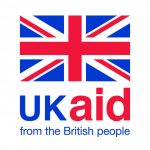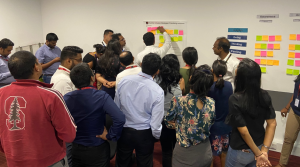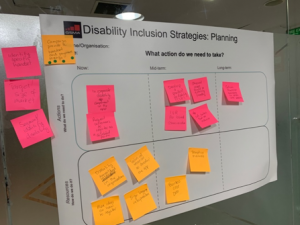From research conducted by the Assistive Tech team last year, we know that a mobile disability gap exists in some low- and middle-income countries and, while some mobile operators are actively working to increase the inclusion of persons with disabilities, others need support to drive actions in this area. As part of our strategy, we think mobile network operators (MNOs) have an instrumental role to play to enable digital inclusion of persons with disabilities and our team has designed a workshop to support mobile operators in their inclusive journey. In this blog, we present our approach to planning a disability inclusion strategy with mobile operators based on the recent engagement with operators in Bangladesh, Sri Lanka and Pakistan.
-
Disability awareness and learning about the mobile disability gap
Core to our strategy workshop is creating awareness regarding disabilities and sharing our evidence on the mobile disability gap. Participants to the workshop find insightful that, for instance, persons with disabilities are ~10 per cent less likely to own a mobile phone than non-disabled persons in Kenya and Bangladesh—but that owning a smartphone and using accessibility features can drive high data use. Or, that only 10 percent of mobile users with disabilities in each country reported using accessibility features.
Disability awareness helps to understand the relevance of speaking about the digital inclusion of persons with disabilities but also to quantify the extent to which persons with disabilities are excluded compared to non-disabled persons.
-
Think about the journey of customers with disabilities and their pain
To ideate solutions that can help close the mobile disability gap and support usage, customer journey mapping is a tool that helps to understand the user experience of mobile by customers with disabilities. Through user stories, such as John and Sumona, we encourage participants to empathise with users with disabilities and reflect on what we think their journey is as customers of mobile products and services. We follow a customer journey defined by four stages: awareness, access, ownership and usage. The exercise involves considering what customers from different disability segments do, think and feel through the different stages and the challenges experienced that prevent them to use mobile to its full enabling potential.
-
Ideate and prioritise solutions to these challenges
After the customer journey exercise has been done, participants are invited to think creatively of potential ways in which the pain points could be resolved. Ideas could include, for instance, re-thinking the way in which products and services are currently offered by MNOs or proposing new products that specifically target the needs of persons with disabilities. Participants are, then, invited to prioritise and vote for the most feasible and impactful solution.
-
Empathising with colleagues with disabilities
Although our strategy activities do not focus on designing internal activities, we encourage the participants to consider some of the practices that the operators have for employing or supporting employees with disabilities. The exercises focus on reflecting on their own journey as employees of the organisation and thinking what, if any, challenges do someone with disabilities may face in the stages of this journey and potential ways in which these challenges could be resolved.
-
Map a disability inclusion strategy
Sometimes, participants may feel overwhelmed by the size of the problem and may think that the solutions for resolving the challenges of customers with disabilities may not be possible. Using a strategy road mapping exercise, participants are invited to break down solutions into more manageable actions that can help identify the resources needed. Ideally, participants need to come from different business units from the organisation so that a holistic approach to planning can be taken.
We have delivered workshops to mobile operators in Sri Lanka, Pakistan and Bangladesh following this approach to designing a Disability Inclusion Strategy. So far, the experiences have been positive, and feedback received indicates that the workshop has increased awareness regarding disability, provides valuable information and helps to understand the needs of customers with disabilities, while also encouraging to think creatively on how to support them better. For the Assistive Tech team, these strategy workshops have helped us to define action plans together with MNOs, and identify areas where operators need support for driving inclusion of persons with disabilities and reducing the mobile disability gap. The mobile industry has a major role to play in creating an accessible digital ecosystem and we will continue to reach out operators globally and work with them to design their Disability Inclusion Strategies to eliminate the digital exclusion faced by persons with disabilities.
“Dialog has over many years attempted different activities and actions to better serve and include people with disability. The GSMA workshop gave us an opportunity to engage in a focused manner with a specialised team comfortable with technology as well as disability. We found this to be highly value-adding and look forward to seeing where the conversations that were sparked, lead us.” – Charitha Ratwatte (Head Group Sustainability, Dialog Axiata Plc)







